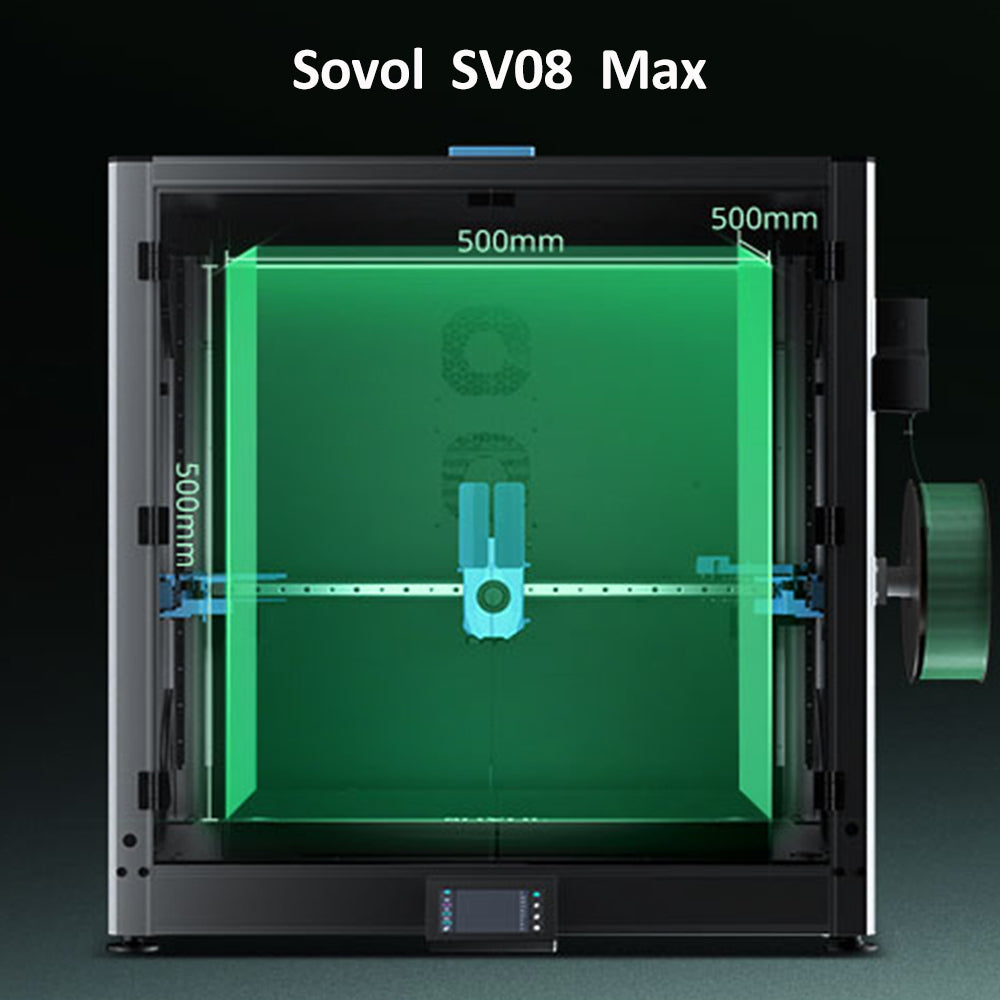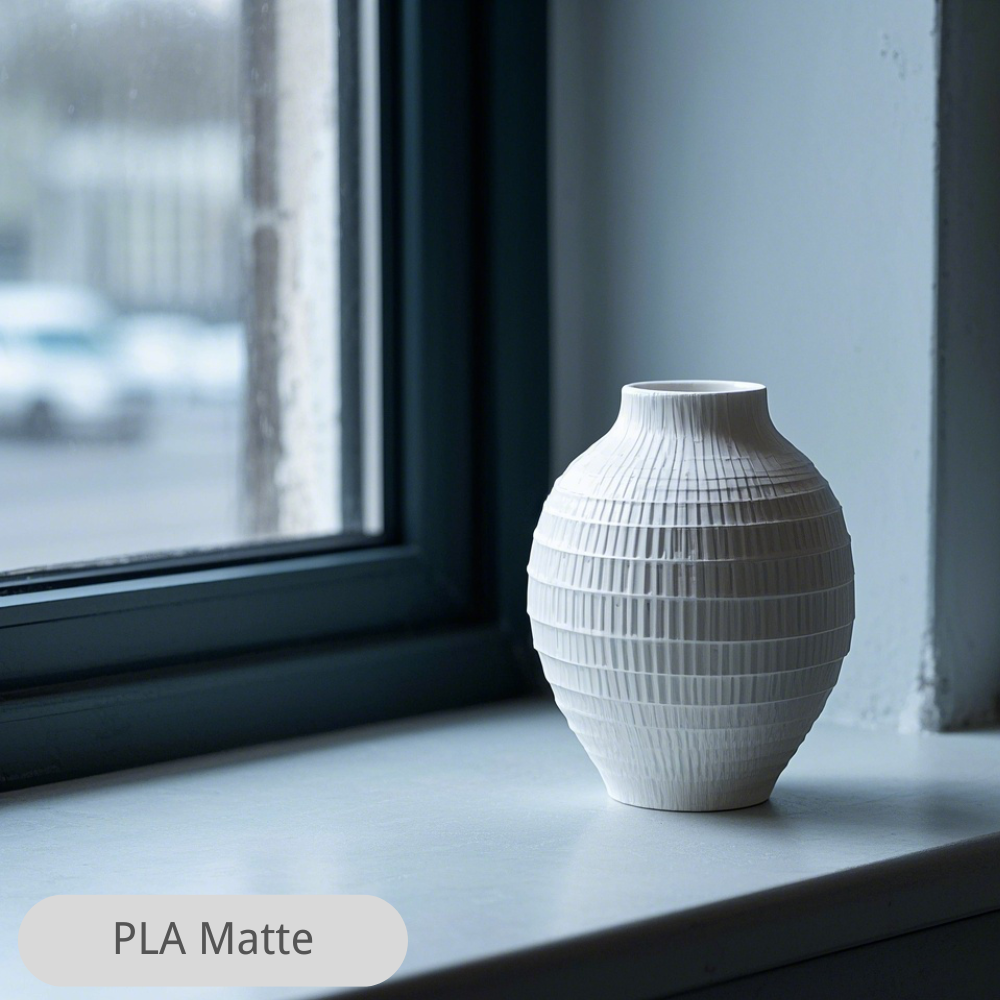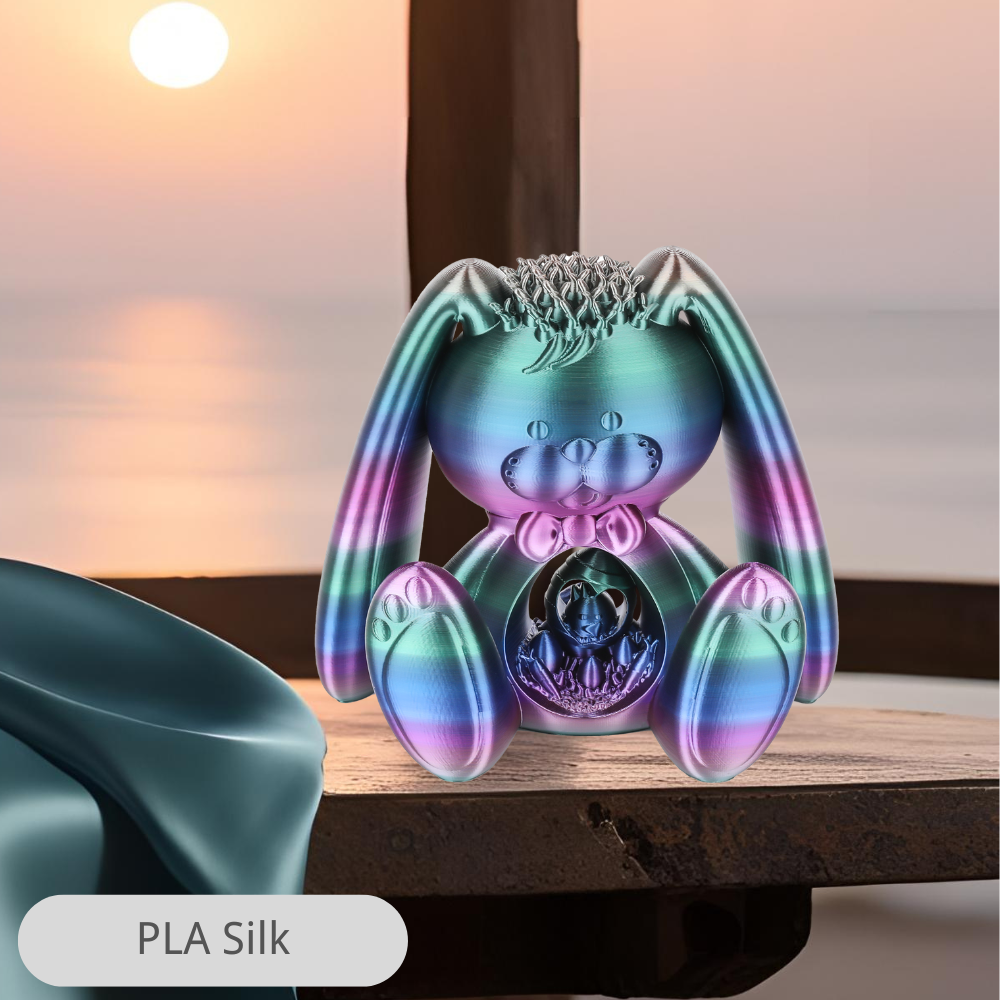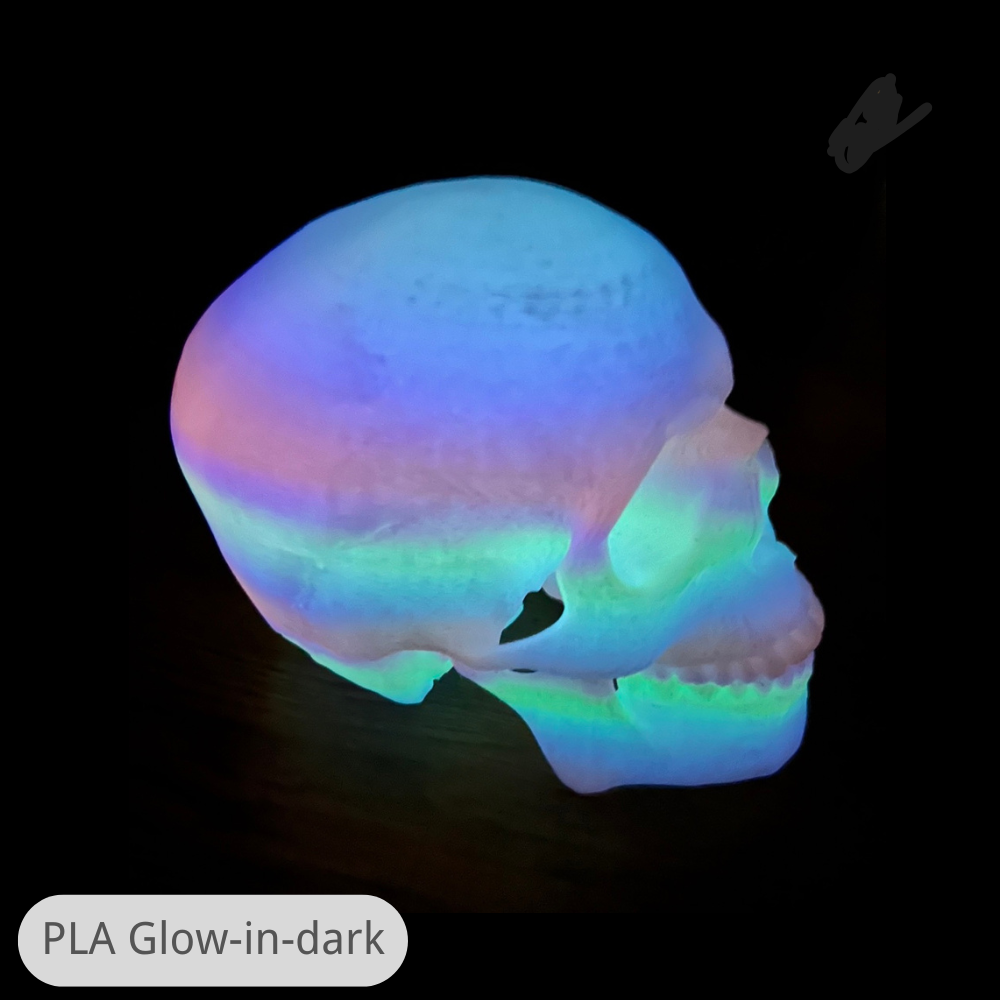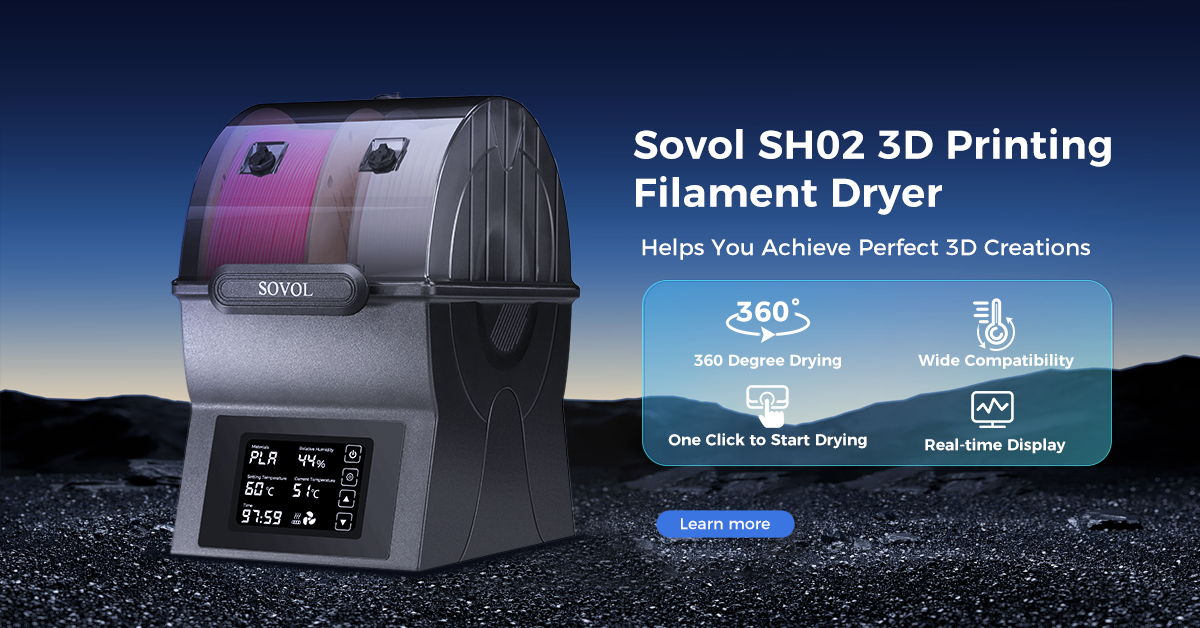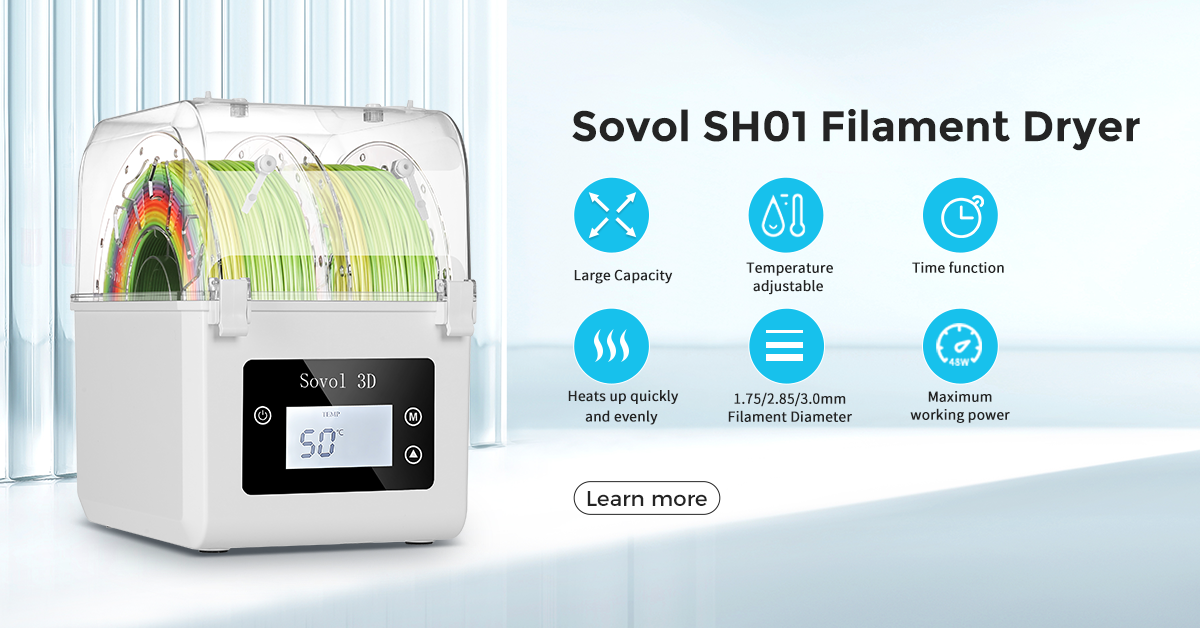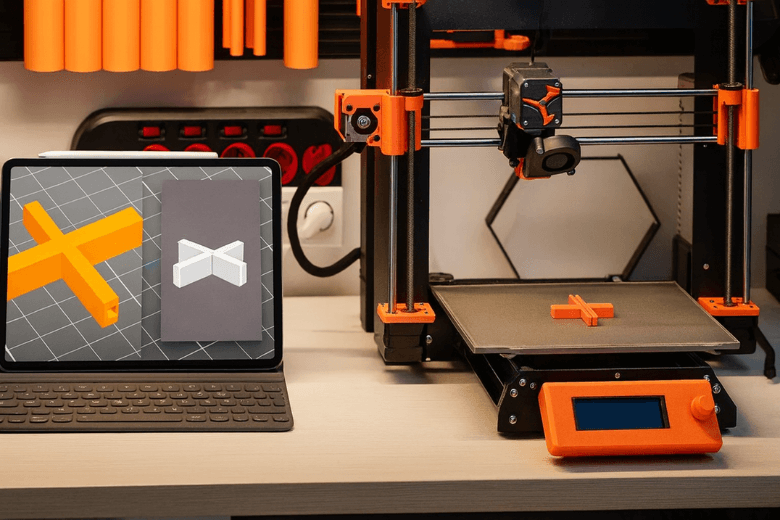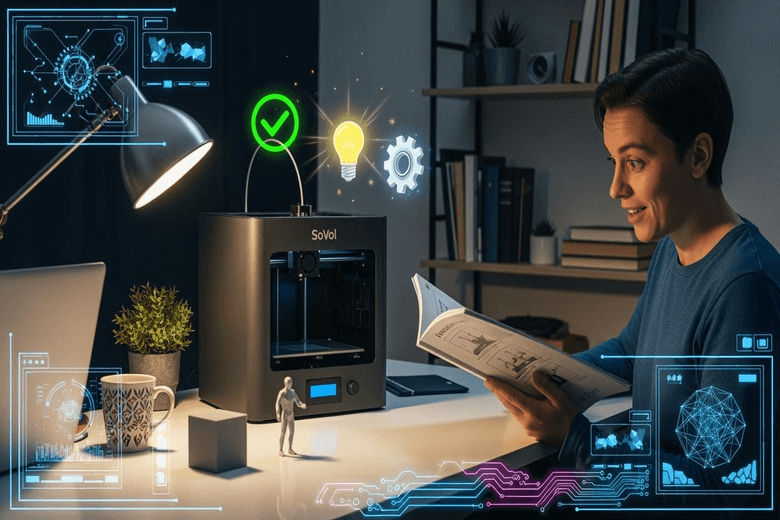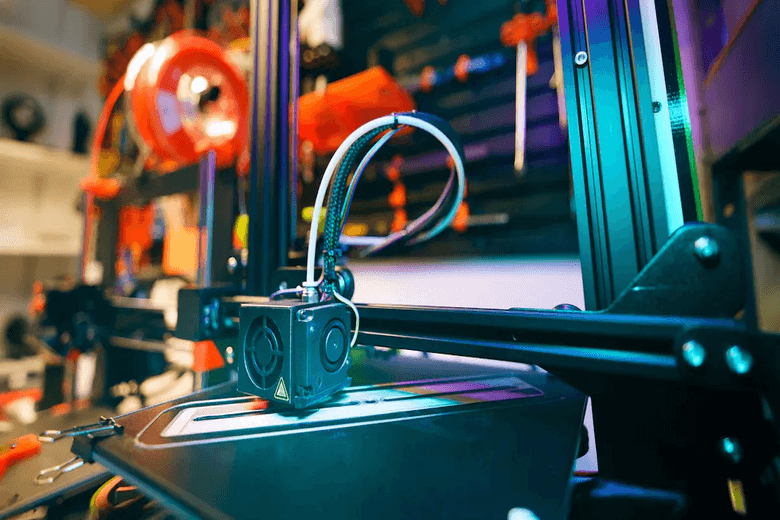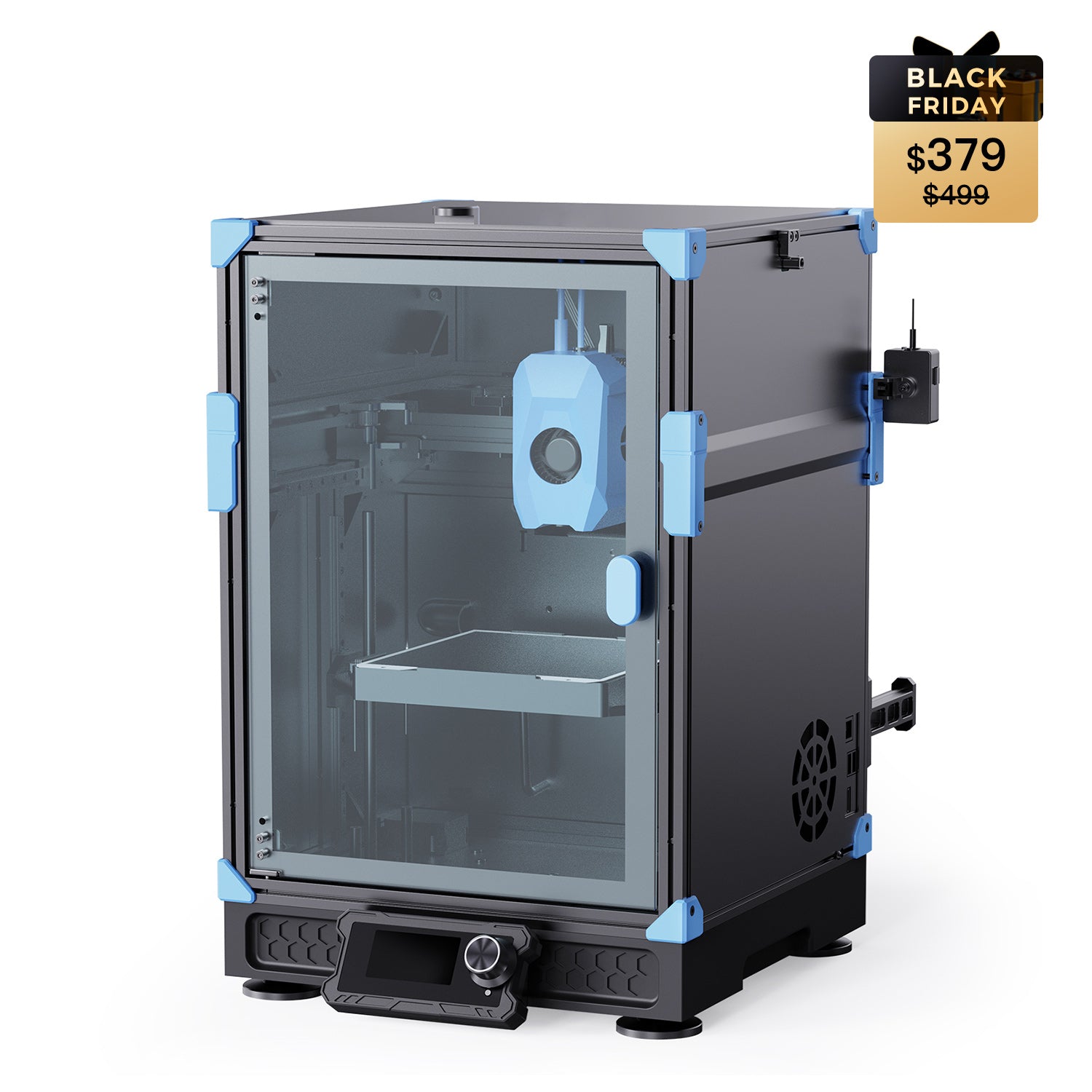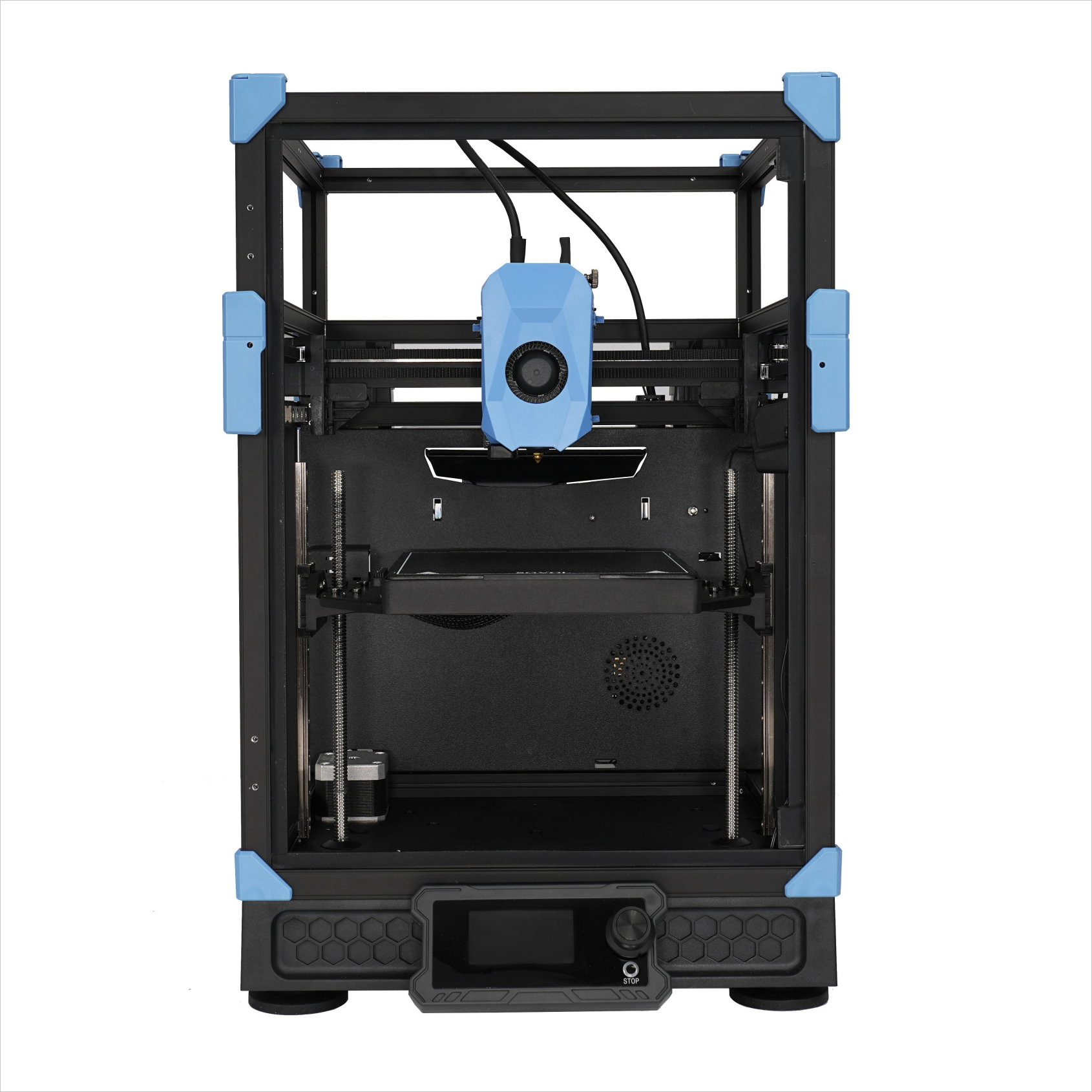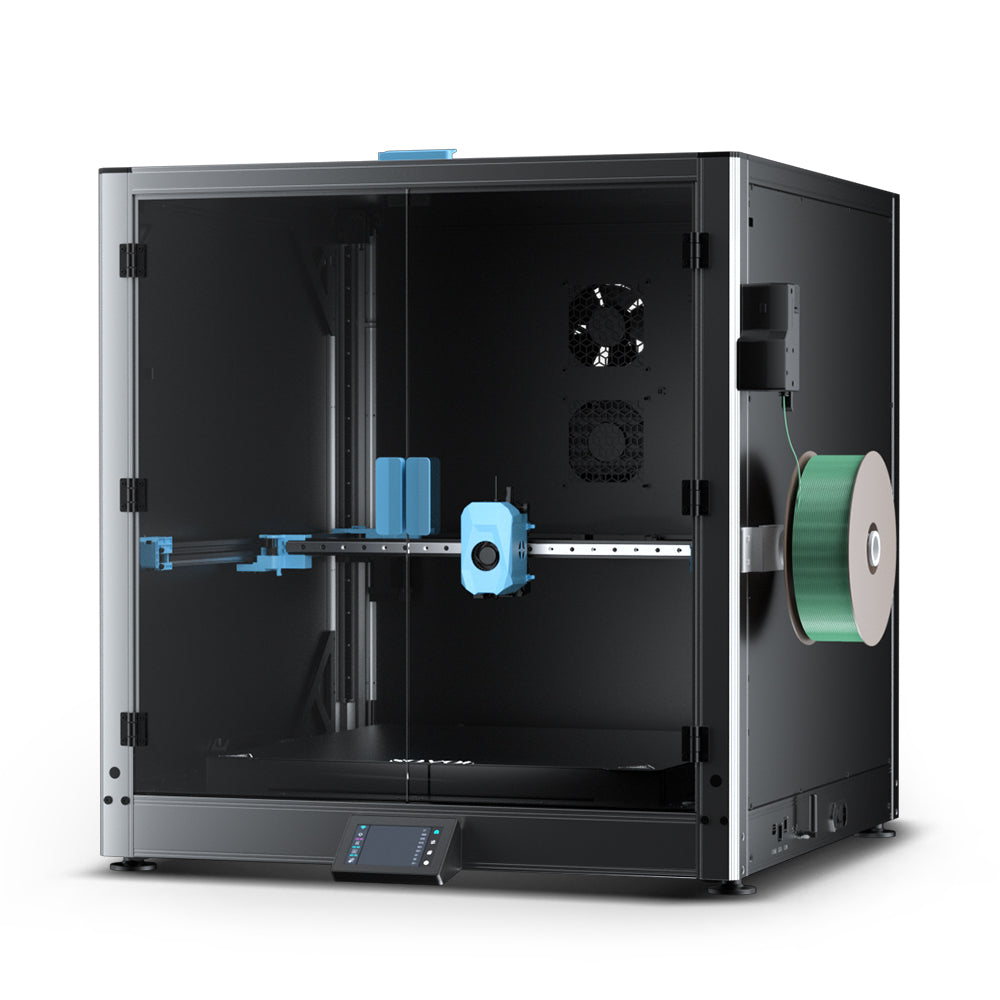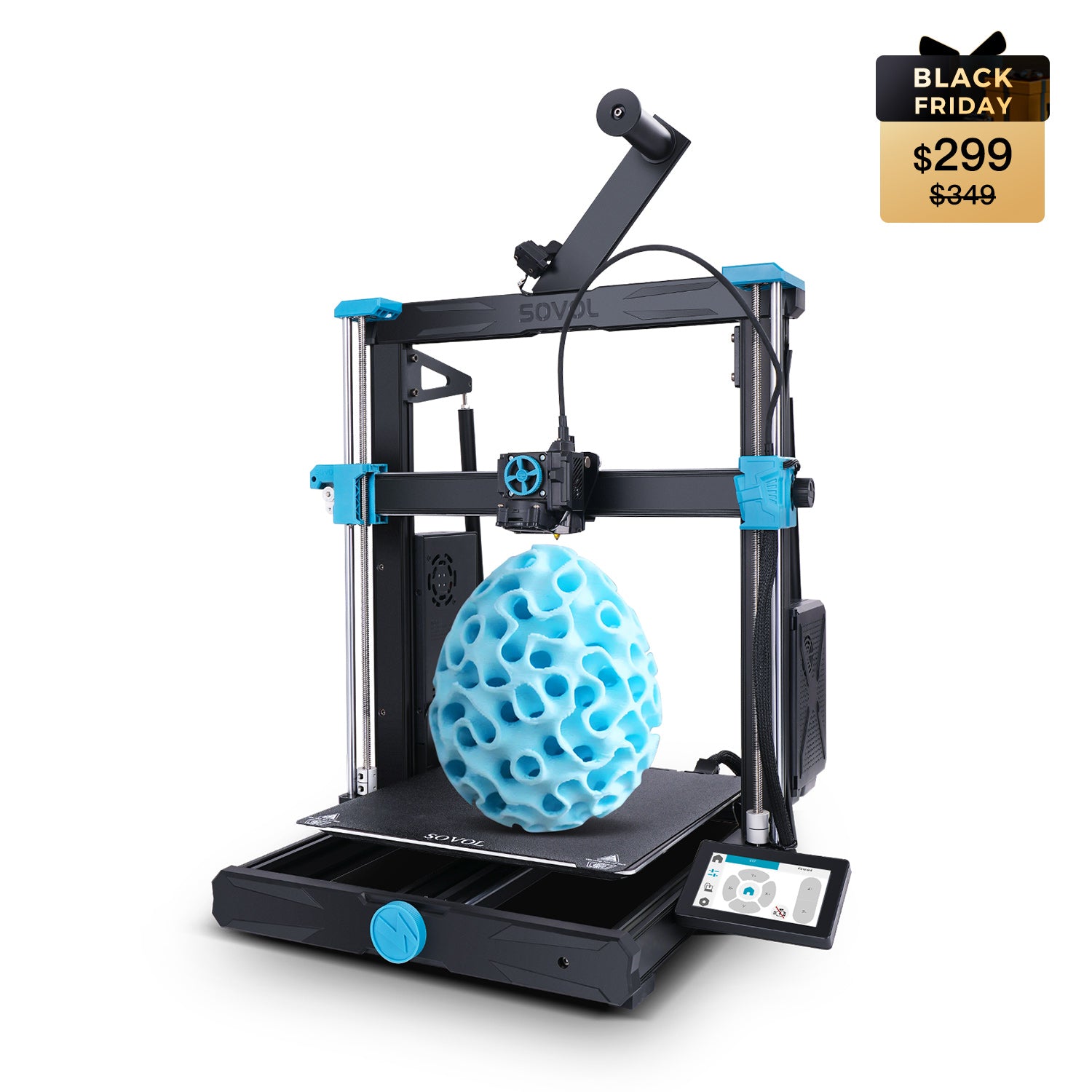If you are new to 3D printing for beginners and are considering enclosed 3D printers, PLA is a good choice. It is easy to use and safe for beginners, providing nice print quality. PETG is also a good option, but you need good airflow to prevent tiny particles from building up in the air. Look at the table below for a quick safety guide:
|
Filament |
VOC Level |
UFP Level |
Odor |
Key Safety Consideration |
|---|---|---|---|---|
|
PLA |
Very Low |
Low |
Minimal, sweet smell |
Basic Ventilation |
|
PETG |
Low |
Moderate |
Very low to none |
Good Ventilation |
If you want to be even safer while engaging in 3D printing for beginners, try these tips:
- Put your printer in a room with fresh air.
- Use an enclosed setup to trap any fumes.
- Add an air filter for extra safety.
Enclosed printers are particularly beneficial for beginners, helping them achieve steady results while also making the workspace safer. Think about what you want to create before picking a filament. This guide will assist you in making the right choice.
Key Takeaways
- Begin with PLA for 3D printing. PLA is simple to use. It works at lower temperatures. PLA gives nice results.
- Pick PETG for strong and heat-resistant projects. PETG is great for parts that need to last long.
- Make sure you have good airflow when using PETG. This lowers the chance of breathing in tiny particles.
- Use an enclosed printer to keep things steady. This stops warping and makes prints look better.
- Join online groups for help and advice. Talking with others helps you learn and solve problems.
PETG vs PLA for 3D Printing Beginners
Which Is Easier to Use
If you are just starting out with 3d printing for beginners, you probably want a material that is simple to work with. When you look at petg vs pla, you will notice that PLA stands out for its ease of use. You can print PLA at lower temperatures, usually between 190°C and 220°C. Most printers handle PLA well, and you do not need a heated bed. This makes PLA a favorite for beginners who want to get good results without a lot of fuss.
PETG is also popular, but it comes with a few more steps. You need to set your printer to higher temperatures, usually between 230°C and 250°C. PETG also needs a heated bed, set between 65°C and 90°C, to prevent warping. Some enclosed printers make this easier, but you still have to pay attention to the settings.
Here’s a quick look at the main differences in ease of use:
- PLA prints at lower temperatures and does not need a heated bed.
- PETG needs higher temperatures and a heated bed.
- PLA is easier to remove from the print bed and supports simple post-processing.
- PETG can stick too well, making support removal tricky.
Tip: If you want the smoothest start, go with PLA. You will spend less time adjusting settings and more time enjoying your prints.
When to Choose PETG Over PLA
You might wonder when it makes sense to pick PETG instead of PLA. The answer depends on what you want from your prints. If you need something strong, flexible, and able to handle heat, PETG is a great choice. It works well for parts that need to bend a little or survive in warmer places.
PETG is also better if you want your prints to last longer or resist chemicals. For example, if you plan to make a phone holder for your car or a part for outdoor use, PETG will give you better quality and durability. PLA is perfect for models, toys, and decorations, but it can get soft in the sun or break if you drop it.
Here’s a table to help you decide:
|
Feature |
PLA |
PETG |
|---|---|---|
|
Print Quality |
Smooth, detailed |
Strong, slightly glossy |
|
Ease of Use |
Very easy |
Easy, but needs more care |
|
Heat Resistance |
Low |
High |
|
Durability |
Good for display |
Great for functional parts |
|
Post-Processing |
Simple |
Can be tricky |
If you decide to try PETG, keep these tips in mind:
- Clean your print bed before switching from PLA to PETG.
- Use a glue stick or Windex to help PETG stick to the bed.
- Raise the Z-offset a little for better first layer adhesion.
- Lower the cooling fan speed to avoid rough prints.
- Use different print surfaces for each material.
- Clean the nozzle when switching back to PLA.
- Watch your extrusion rate to avoid skipping.
Note: PETG can string or ooze if your settings are off. Try lowering the temperature by 5-10°C or drying your filament to fix this.
Choosing between petg vs pla comes down to your project needs. If you want the easiest path and good print quality, start with PLA. If you need more strength and heat resistance, PETG is worth a try. Both materials work well in enclosed printers, but you will find PLA gives you the best ease of use as a beginner.
PLA and PETG Filament Basics
PLA Overview and Uses
If you are new to 3D printing, you will hear about PLA. PLA comes from plants like sugar cane and cornstarch. This makes it better for the environment. PLA is easy to print because it works at low temperatures. It sticks to the print bed without much effort. Even beginners can get good results with PLA.
Here are some important things about PLA:
- Made from plants that can grow again
- Tensile strength: 38 - 47.8 MPa
- Flexural strength: about 85 MPa
- Glass transition temperature: around 53 °C
- Heat deflection temperature: about 80 °C
- Hardness: Shore D 66
- Density: 1.08 - 1.12 g/cc
PLA is useful for many kinds of projects. Beginners use it for:
- Models for decoration
- Prototypes to test ideas
- Simple working parts
- Medical models for learning
- Packaging that is better for the earth
PLA helps you try new things without hard settings or problems.
PETG Overview and Uses
PETG is another good choice if you want stronger prints. PETG is tougher than PLA and does not break easily. It also stands up to chemicals, so it lasts longer. PETG works well in enclosed printers because it does not warp much. The layers stick together well.
Here are some facts about PETG:
|
Property |
Description |
|---|---|
|
Strong and does not break easily, good for real parts. |
|
|
Toughness |
Bends a little and does not crack fast. |
|
Chemical resistance |
Handles acids, oils, and fats without damage. |
|
Low warping |
Stays flat while printing, even for big things. |
|
UV resistance |
Can be used outside in the sun. |
|
Food safety |
Some types are safe for food storage. |
You can use PETG for:
- Cases for Raspberry Pi
- Holders for your phone
- Organizers for tools
- Plant pots for outside
- Things that need to be waterproof
- Parts that snap together
PETG lets you make things that are strong and last a long time.
Why Enclosed Printers Matter
Enclosed printers help you get better prints and keep you safe. The enclosure keeps the heat steady, so prints do not warp or fail. You do not have to worry about dust or wind ruining your print. The cover also keeps you, your family, and pets safe from hot parts. You will hear less noise and smell less plastic. This makes 3D printing nicer at home. Beginners like enclosed printers because they help you get good results every time.
Filament Comparison: Print Quality and Performance
Printability and User Experience
When you start 3d printing for beginners, you want a filament that makes life easy. PLA gives you sharp details and smooth prints with little effort. You can use it on most enclosed printers without much trouble. PETG needs higher temperatures and careful settings. It can string or ooze if you do not tune your printer. If you want high-quality prints right away, PLA is the best choice for most beginners.
Strength and Durability
You might wonder which material stands up better to stress. PLA has a higher tensile strength, but it can snap if you bend it. PETG bends more and handles impacts well. If you need parts that last or take a beating, PETG is the winner. Both filaments do well in high-cycle fatigue tests, but PETG keeps its shape better under repeated use.
Heat and Chemical Resistance
Heat can ruin a print if you pick the wrong material. PLA starts to soften at about 50°C. PETG can handle up to 70°C before it gets soft. If you plan to use your prints outdoors or near heat, PETG is safer. PETG also resists most household chemicals, while PLA can lose strength fast if it gets wet or meets strong cleaners.
Surface Finish and Color Choices
You will notice PLA gives you a glossy, smooth finish with sharp corners. PETG looks a bit waxy and less shiny, but still nice. Both offer many color options, so you can find what you like. If you want the best surface quality, PLA is hard to beat.
Cost and Value
PLA usually costs about $20 per kilogram. PETG can be a bit cheaper, around $14 per kilogram. PLA is less expensive at first, but you may need to replace parts more often. PETG lasts longer, so you might save money over time, especially for high-quality prints in tough spots.
Quick Comparison Table
|
PLA |
PETG |
|
|---|---|---|
|
Printability |
Easy, sharp details |
Needs tuning, can string |
|
Strength |
High, but brittle |
Flexible, impact-resistant |
|
Durability |
Good for display |
Great for real use |
|
Heat Resistance |
Up to 50°C |
Up to 70°C |
|
Finish |
Glossy, sharp |
Waxy, less detail |
|
Cost |
~$20/kg |
~$14/kg |
Tip: Think about your project’s needs. If you want easy, high-quality prints, start with PLA. If you need strong, flexible parts for outdoor or tough use, PETG is a smart pick.
Choosing the Best 3D Printer for Beginners
Key Features for Beginners
When you look for your first 3d printer, you want it to be simple. Focus on features that make printing easy and safe. Here are some things to check in enclosed 3d printers:
- Safety features: The cover keeps hot parts away from you. It also helps trap fumes inside.
- Material compatibility: Pick a printer that works with PLA and PETG. This gives you more choices for your projects.
- Ease of use: Find printers with easy controls and clear guides. Some have touchscreens for quick setup.
- Print speed and accuracy: Fast prints are nice, but details matter too. Good accuracy means your print matches your design.
- Auto bed leveling: This saves time and helps stop failed prints.
- Community support: A big online group helps you find answers fast.
Tip: Check features before you buy. Think about what you need for your projects and skill level.
Top Entry-Level Enclosed Models
There are many beginner printers to pick from. Some models are better because they are safe, accurate, and easy to set up. Here are top enclosed 3d printers for 2025:
- Bambu Lab A1 Mini: It has auto bed leveling and WiFi. Good for small prints.
- Prusa Core ONE: Strong chamber, fast prints, and easy software. Big community for help.
- QIDI Q1 Pro: Auto-leveling and temperature control. Works with many materials.
- Creality Ender 3 V3 SE: Cheap, easy to build, and steady prints.
- ModelMaker 2.0: Simple controls and quiet. Strong frame for learning.
- FlashForge Creator Pro 2: Dual extruders and enclosed chamber. Easy filament loading.
- Anycubic Kobra 3 Combo: Assisted leveling, touchscreen, and quick setup.
- Bambu Lab P1S: Large build space, fast prints, and auto-leveling.
- BambuLabs X1C: Advanced leveling and AI checks. Good for advanced beginners.
To compare printers, read reviews and see what other beginners say.
Safety and Material Compatibility
Safety is very important when picking a 3d printer. Enclosed printers keep you safe from hot parts and trap fumes. Many have door sensors and air filters for extra safety. These features protect you and your family.
Material compatibility matters too. Choose a printer that works with PLA and PETG. Some have UL certification, which means they meet safety rules. This shows the printer is safe for both filaments.
Note: Always look for safety certifications and read reviews before buying.
Budget and Ongoing Costs
Think about your budget before buying a 3d printer. The price is not just what you pay at first. You also need money for materials, repairs, and electricity. Here is a table to show average costs:
|
Cost Type |
Average Cost Range |
|---|---|
|
Initial Investment |
$200 – $500 |
|
Upper Limit |
$1,000 |
|
Materials |
$20 – $100 per kilogram |
|
Maintenance |
$50 – $500 annually |
|
Electricity |
Varies based on usage |
You can find a good beginner printer that fits your budget. Some cost less but still work well and are safe. Always read reviews to see if the printer is easy and reliable. Remember to add the cost of filament and extra parts.
Tip: Make a budget before you shop. Be sure you can pay for the printer and the extra costs.
When you pick a 3d printer, think about your project size, needed features, and budget. Compare models and read reviews to find the best one for beginners. Choose a printer that matches your skills and helps you learn more about 3d printing.
Practical Tips for 3D Printing for Beginners
Setup and Calibration
Getting your printer ready is the first step. You want to make sure your printer works well before you start any project. Check the bed level. Use auto bed leveling if your printer has this feature. Clean the nozzle and the print bed. Load your filament and check that it feeds smoothly. Set the right temperature for your filament. PLA and PETG need different settings, so look at your printer’s manual for the best numbers. Run a test print to see if everything works. If you see problems, adjust the bed or the nozzle height. These features help you get better results.
Tip: Always check your printer’s calibration before each new print. This saves time and stops failed prints.
Avoiding Common Mistakes
Many beginners make the same mistakes. You might forget to clean the print bed or use the wrong temperature. Sometimes, you pick the wrong filament for your project. Watch out for stringing or warping. If you see these issues, check your printer’s settings. Use the right features like cooling fans and heated beds. Don’t rush your prints. Slow down the speed if you see rough edges. Keep your filament dry and store it in a sealed bag. These features help you avoid problems.
|
Mistake |
How to Fix |
|---|---|
|
Bed not level |
Use auto leveling feature |
|
Stringing |
Lower print temperature |
|
Warping |
Use heated bed feature |
|
Poor adhesion |
Clean bed, adjust nozzle height |
Using Online Resources
You can learn a lot from online communities. Many beginners join forums to ask questions and share tips. Look for groups that talk about your printer model. Watch videos that show how to use features and fix problems. Read guides on 3d printing for beginners. You will find answers to almost any question. If you get stuck, post a photo of your print and ask for help. People love to share advice about printer features and upgrades.
Note: The more you use online resources, the faster you learn new features and tricks for your printer.
If you are like most beginners, you will find PLA the easiest way to start 3d printing. PLA prints at lower temperatures and gives you a smooth finish with less warping. PETG works better for outdoor or tough parts but needs higher heat and more setup. Here is a quick look at the main differences:
|
Material |
Melting Point |
|
|---|---|---|
|
PLA |
Lower than PETG |
Lower than PETG |
|
PETG |
75 to 85 °C |
Higher than PLA |
- PLA is great for decorative models and prototypes.
- PETG is strong and flexible for functional parts.
- Think about your budget and project needs.
Start with PLA for safety and ease. As you grow, try PETG for more advanced projects. Join online groups, research printers, and keep learning. Every print helps you get better!
FAQ
What is the best filament for beginners?
You should start with PLA. It prints easily and gives you good results. PLA works well for most projects. You will find it simple to use and safe for home use.
Can I use PETG in any enclosed 3D printer?
Most enclosed printers can handle PETG. Check your printer’s specs first. Make sure it reaches the right temperature. Use good ventilation for safety.
How do I stop prints from warping?
Level your print bed. Clean the surface before each print. Use a heated bed for PETG. Try to keep your printer’s enclosure closed during printing.
Is 3d printing safe for kids?
3d printing is safe if you follow some rules. Always use an enclosed printer. Keep the area well-ventilated. Never touch hot parts. Watch children while they print.



